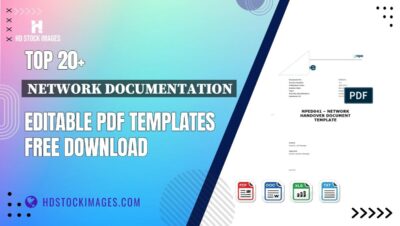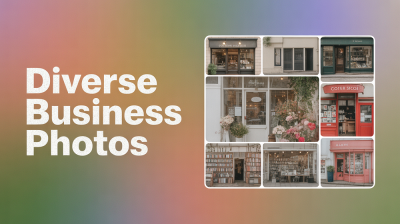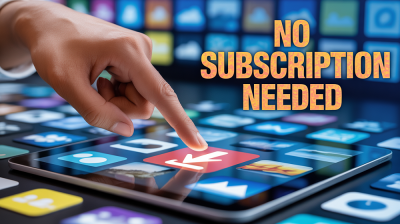We've all been there—frantically trying to access our LinkedIn accounts only to be met with frustration. Whether you're looking to connect with a colleague or update your professional profile, being locked out can feel daunting. But don’t worry! This guide will help you understand the common reasons behind account access issues and the steps you can take to regain control. Let’s dive in!
Common Reasons for Account Access Issues
When it comes to LinkedIn, there are several common culprits that might prevent you from accessing your account. Understanding these reasons can help you pinpoint the issue quickly. Here’s a rundown of the most frequent problems:
- Forgotten Password: It’s easy to forget your password, especially if you haven’t logged in for a while. LinkedIn allows you to reset your password via email or SMS.
- Account Inactivity: If you haven’t logged in for an extended period, LinkedIn may deactivate your account. Regular activity is key to keeping your profile active.
- Security Concerns: LinkedIn takes security seriously. If they suspect any unusual activity, they may temporarily lock your account. This could be due to multiple failed login attempts or access from a new device.
- Email Address Issues: If you’ve changed your email address and haven’t updated it on LinkedIn, you may find yourself unable to receive password reset links.
- Browser or Cache Problems: Sometimes, cached data or cookies can cause login issues. Clearing your browser cache or trying a different browser can help resolve this.
Identifying the root cause of your access issue is the first step toward a solution. Luckily, most problems can be easily fixed with a bit of troubleshooting!
3. Step-by-Step Guide to Recover Your Account
If you find yourself locked out of your LinkedIn account, don't worry! Recovering it is usually a straightforward process. Follow these steps to regain access:
- Visit the LinkedIn Login Page: Go to the LinkedIn login page and click on “Forgot password?”.
- Enter Your Email: Input the email address associated with your LinkedIn account. Make sure it’s the correct one!
- Check Your Inbox: Look for an email from LinkedIn with the subject “Reset your password.” If you don’t see it, check your spam or junk folder.
- Follow the Link: Click on the link in the email. This will take you to a page where you can set a new password.
- Create a Strong Password: Choose a new password that’s strong and unique. Aim for at least 8 characters, including numbers and symbols.
- Log In: With your new password, go back to the LinkedIn login page and sign in!
And that’s it! You’re back in your account. If you encounter any issues, LinkedIn provides additional support through their help center.
4. Additional Tips for Securing Your LinkedIn Account
Once you've regained access to your LinkedIn account, it’s essential to secure it to prevent future issues. Here are some tips:
- Enable Two-Step Verification: This adds an extra layer of security. You’ll need to enter a code sent to your phone in addition to your password.
- Regularly Update Your Password: Change your password every few months to keep your account secure. Use a mix of letters, numbers, and symbols.
- Monitor Your Account Activity: Regularly check your account for any suspicious activity or unauthorized logins and report them immediately.
- Be Wary of Phishing Attempts: Always verify emails claiming to be from LinkedIn. Look for any inconsistencies or unusual requests.
- Review Your Privacy Settings: Make sure your profile information is only visible to those you trust. Adjust your settings for who can see your activity.
By following these tips, you can enhance the security of your LinkedIn account and enjoy a safer online networking experience!
5. When to Contact LinkedIn Support
Finding yourself locked out of your LinkedIn account can be frustrating. While many issues can be resolved on your own, there are specific situations where reaching out to LinkedIn Support is your best option. Here are some scenarios to consider:
- Permanently Locked Account: If you've tried everything but can't regain access, your account may have been permanently locked due to security concerns or repeated login attempts.
- Account Hacked: If you suspect that someone has accessed your account without your permission and changed your login details, it's crucial to contact support immediately.
- Unable to Verify Identity: Sometimes, LinkedIn might ask for identity verification (like an email or phone number confirmation) that you can't fulfill. In this case, support can help verify your identity through other means.
- Technical Issues: If you’re experiencing persistent technical glitches that prevent you from logging in or using the site effectively, support can assist you in troubleshooting these problems.
- Profile Issues: If your profile has been flagged or removed for any reason and you don't understand why, contacting support can help clarify the situation and potentially restore your profile.
When reaching out, be sure to provide as much detail as possible about your issue. This will help the support team assist you more efficiently.
6. Conclusion
In today’s digital landscape, having access to your LinkedIn account is essential for networking and career growth. Whether you've forgotten your password, encountered a technical glitch, or faced security issues, there are solutions available. Remember, the steps we've discussed—from resetting your password to checking your email—often resolve common problems.
However, if you find yourself in a situation where self-help doesn't work, don't hesitate to reach out to LinkedIn Support. They have the expertise to handle more complicated issues and can guide you to regain your access. Keeping your information up-to-date and enabling two-factor authentication can further prevent future access issues.
So, next time you find yourself locked out, remember that you have options. Take a deep breath, follow the steps we've outlined, and you'll be back on LinkedIn, connecting and engaging in no time!










